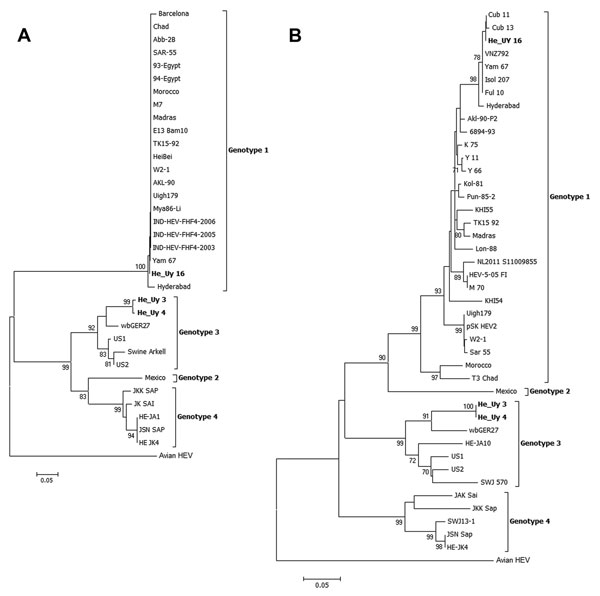Volume 20, Number 1—January 2014
Letter
Indigenous Hepatitis E Virus Genotype 1 Infection, Uruguay
Figure

Figure. Phylogenetic tree of the Hepatitis E virus constructed on the basis of A) the partial 137-nt open reading frame (ORF) 2–3 overlapping region and B) the 244-nt sequence of the RNA dependent RNA polymerase within ORF1. Trees were generated by using the neighbor-joining method with the Kimura 2-parameter as the substitution model. The robustness of the trees was determined by bootstrap for 1,000 replicates. Values ≥70% are shown. Strains isolated in Uruguay are shown in boldface. The isolate of genotype 1 detected in this study (He_Uy 16) clustered (98% bootstrap value) with genotype 1 strains from India and Latin America (Cub 11 and 13 and VNZ792). Scale bars indicate nucleotide substitutions per site.
Page created: December 18, 2013
Page updated: December 18, 2013
Page reviewed: December 18, 2013
The conclusions, findings, and opinions expressed by authors contributing to this journal do not necessarily reflect the official position of the U.S. Department of Health and Human Services, the Public Health Service, the Centers for Disease Control and Prevention, or the authors' affiliated institutions. Use of trade names is for identification only and does not imply endorsement by any of the groups named above.